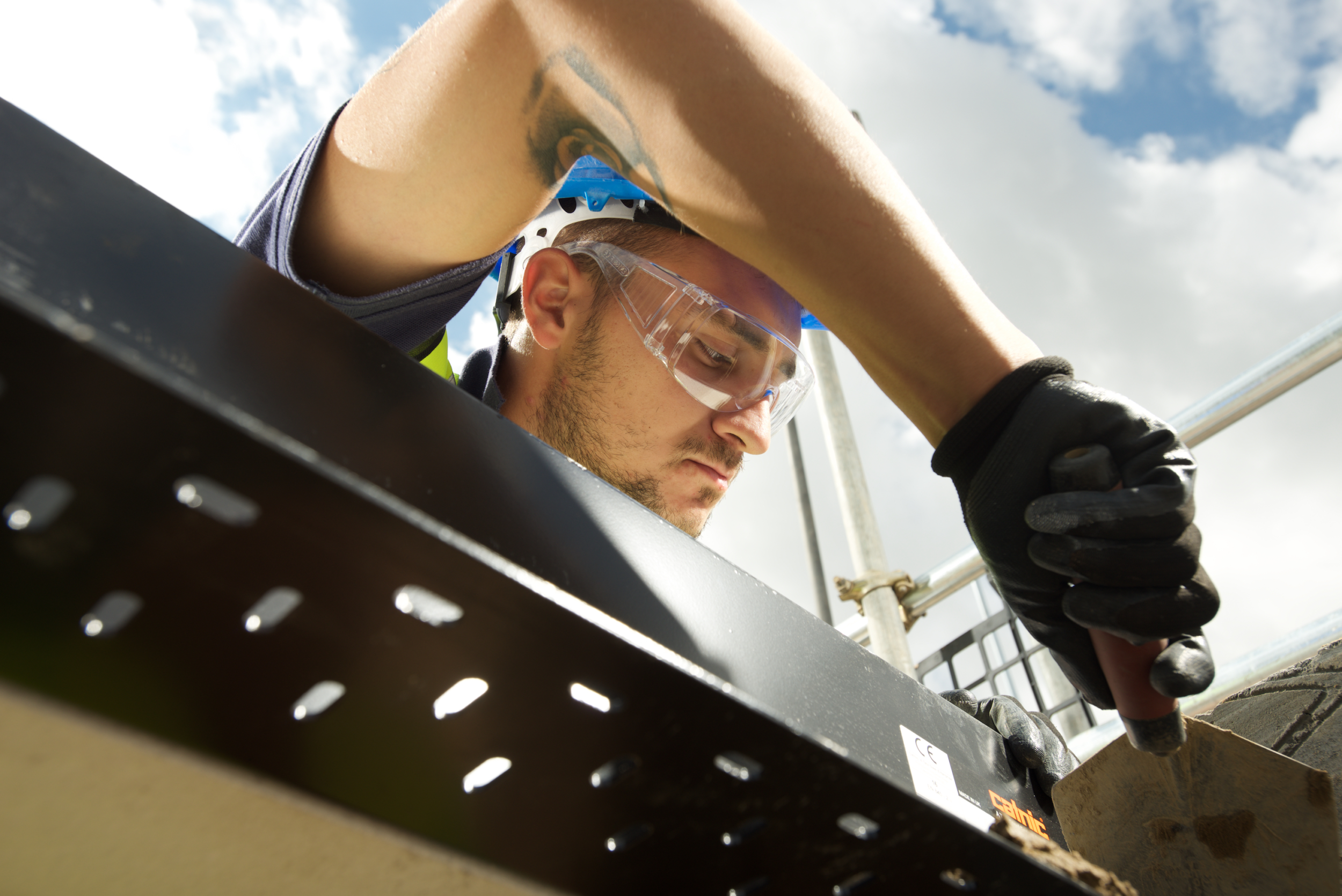Ensuring the energy efficiency of buildings has never been more important, not only in terms of complying with the building regulations but also lowering the cost of heating for homeowners or building occupants.
To meet the requirements of the Building Regulations Part L 2013, the thermal performance of each building component needs to be considered to calculate its contribution to the overall heat loss for the property. While elements such as the wall and roof insulation, doors, windows and ventilation are all often carefully chosen to improve efficiency, a number of other areas can also contribute to heat loss, including structural components such as the steel lintels.
Although vital to the structure, if not selected and installed correctly, lintels have the potential to compromise the energy performance of a new building. Due to their nature as an element that spans the cavity wall, standard cavity lintels can facilitate the transference of heat from the interior to the exterior where it is lost to surrounding environment. For a typical four-bedroom house with a floor area of 57 m2, the heat loss can account for about 6% of the total (based on a default lintel psi value of 0.5 W/mK). This thermal bridging results in increased energy usage and costs to heat the property.
The solution to this issue is the specification of thermally broken lintels that significantly reduce the thermal bridging between the inside and outside of the building. Catnic’s Thermally Broken Lintel range (TBL) features a unique composite design and are the only lintels on the market to provide a complete thermal break between the inner and outer leaf of a cavity wall. The Catnic TBL is manufactured from powder coated galvanised steel bonded to a high-density, fire retardant core.
The TBL range has Building Research Establishment (BRE) certified energy transmittance psi values of just 0.02 to 0.05 W/mK – even surpassing the requirements of SAP 2012 Appendix Q. As such, replacing a standard Catnic lintel with a TBL can reduce the heat lost through window head details by as much as 96%.
Furthermore, Catnic TBLs have been designed to be installed in exactly the same way as a traditional lintel, with the same safe working loads as the equivalent Catnic cavity wall lintel. Catnic TBLs can also be used for heavy and extra heavy-duty applications, making them suitable for a wide range of projects. This allows a seamless switch from standard lintels to TBLs regardless of the details of the build.
Utilising Thermally Broken Lintels that provide a complete thermal break is a simple way to significantly improve the thermal performance of a building. By selecting a Catnic TBL the improvement can be made without the need to redesign the structure or reassess the structural loads.
More
-
![Catnic standard duty timber frame lintel for 70-85mm cavity wall shown in situ]()
- Lintels
- Guide
Steel lintels for timber framed walls
-
![Catnic standard duty cavity wall lintel CGE90/100 for closed eaves shown in situ]()
- Lintels
- Guide
Closed eaves lintels


